|
The Advanced Ligo and Advanced Virgo observatories announced the first detection of a gravitational waves that has been recorded by all three interferometers simultaneously. The paper describing the event has been published by PRL. The merger event itself, a binary black hole composed of a black hole with ~30 solar masses and another one with ~25 solar masses at a redshift of about 0.1, are matching nicely the previous detections: The crucial part of this detection is that is has been seen by all three instruments. It is thus confirming the performance of the Virgo instrument that had been switched on only two weeks before this observation. It also illustrates the power of combining the data from the different instruments to significantly improve the localisation uncertainty of the origin of the gravitational wave. Using only data from the two Ligo detectors, the 90% uncertainty maps spans 1160deg^2 across the sky, impossible to scan with typical telescope searching for a counterpart/afterglow/etc. Adding the data from Virgo this region shrinks to less then 100deg^2!! This improvement is clearly visible in the skymaps below.
Regions of this size become accessible for pointing telescopes. As example: we managed to cover almost the complete region with H.E.S.S. observations searching for high-energy gamma rays emitted by the black hole merger. As everybody else we didn't see any... See GCN #21673 for a summary of our observations. The importance of this event is thus primarily its illustration of the achieved precision of the GW localisation allowing for follow-up observations across the electromagnetic spectrum. Astronomy with gravitational waves is thus becoming a reality... Stay tuned for more...
0 Comments
I guess most colleagues in the high-energy astroparticle physics domain accepted the idea of the extragalactic origin of the highest energy cosmic rays (UHECR, E>10^18eV) a long time ago: we have already problems to find sources in our Galaxy which are able to accelerate particles up to the knee in the cosmic ray energy spectrum at around 10^15eV. It is therefore hard to imagine galactic accelerators reaching to the ultra-high energies. In addition, one would expect these UHECR particles to show a clear anisotropy toward the Galactic Plane if they were produced there, something that is not observed... Nevertheless, the recent result of the Pierre Auger Collaboration does now provide further evidence for the extragalactic origin of UHECRs. As published in Science, 22 Sep 2017, the arrival direction of particles above 8*10^18eV shows a clear dipolar structure. The amplitude is much stronger than what would be expected from the Compton-Getting effect induced by the movement of the Earth with respect to the cosmic-ray background. Even more interesting, the direction of the dipole (black cross in the figure below) seems to be consistent with the distribution of galaxies in our neighborhood (once the potential magnetic deflections in the galactic magnetic field are taken into account). The direction of galaxy distribution dipole is given as "2MRS" in the figure below, possible magnetic deflections are indicated by the two arrows. More about UHECRs (mainly my own contributions to the field) can be found here: Cosmic rays Sky map in galactic coordinates showing the cosmic-ray flux for E ≥ 8 EeV smoothed with a 45° top-hat function. The galactic center is at the origin. The cross indicates the measured dipole direction; the contours denote the 68% and 95% confidence level regions. The dipole in the 2MRS galaxy distribution is indicated. Arrows show the deflections expected for a particular model of the galactic magnetic field on particles with E/Z = 5 or 2 EeV. (from Science, 22 Sep 2017 and arXiv:1709.07321)
No, not me... although close ;-) The NASA/JPL Voyager satellites just had their 40th birthday! The two spacecraft have been launched in August and September 1977 and are still sending data which allow unprecedented studies of the solar system and its boundary the heliosphere. The current status of the mission and the instruments onboard is given here: Voyager mission status Voyager 1 crossed into "Interstellar space" in 2012 and Voyager 2 is currently in the "heliosheath", the outermost layer of the heliosphere where the solar wind is slowed by the pressure of interstellar gas but still present. Voyage 1 therefore provides the first direct measurements of galactic cosmic rays, unaffected by the solar wind. In addition to the science program, the voyager crafts also provided the first and only pictures of our solar system from the 'outside'. Looking back towards the sun in 1990, voyager 1 took a series of 60 snapshots showing this family picture of 6 planets: From: NASA/JPL
There are now three laser interferometers observing the universe with gravitational waves! The first direct detection of gravitational waves by the two Advanced Ligo detectors in 2015 was recently confirmed by a third event (see here for details). Having only two interferometers recording the events, the localisation uncertainties of the sources was very challenging (see the right figure below). This is now going to change: "Tuesday August 1st 2017, the VIRGO detector located at the European Gravitational Observatory (EGO) in Cascina (near Pisa, Italy) has officially joined the “Observation Run 2” (O2) and is now taking data alongside the American-based twin LIGO detectors. The O2 data taking period will last until August 25th." (from Virgo).
The expected improvement in the localisation accuracy is visualized in the (simulation based) estimate by Leo Singer shown below (left figure, from Ligo). We keep our fingers crossed that the joint duty-cycle of the three detectors is sufficiently high and that nature is kind enough to send us another strong gravitational wave signal in the few weeks until the end of the current data taking run... Over the last week the 35th International Cosmic Ray Conference has been held in Busan (South Korea). It is the largest and best-known meeting on astroparticle physics and is being held every two years. This year about 850 participants from more than 50 countries made the trip to Busan, making it a perfect place to meet many colleagues and friends and learn about the most recent results from all major astroparticle observatories. This year I was invited to give a plenary talk summarizing searches for transient phenomena with high-energy gamma-ray observatories. My talk is here... A personal selection of interesting results: Among the most striking new results is an indication for a small scale anisotropy in the arrival directions of ultra-high energy cosmic rays (UHECR) detected by the Pierre Auger Observatory. In addition to the confirmation of the previously announced dipole structure, they found a correlation with nearby starburst galaxies (i.e. galaxies with a high level of star formation) at angular scales around 13deg. The significance reached about 4sigma (i.e. the probability for a background fluctuation is less then one in 25.000). Details are given here. Somehow everybody fears that this hint might have a similar fate as the previous claim (see Cosmic Rays for more on this). Hopefully these doubts will be proven unsubstantiated by future observations and we will look back at Busan as the place where UHECR astronomy started. ;-) 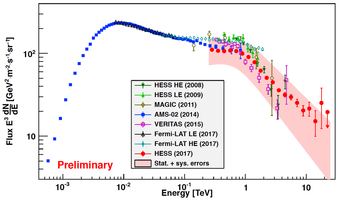 The H.E.S.S. collaboration reported an updated measurement of the energy spectrum of cosmic electrons with unprecedented precision. It seems like the shape of this spectrum and especially the pronounced and very sharp break around 950GeV will give theorists some sleepless nights. It might be related to the set in of cooling effects in the interstellar magnetic fields, but one would naturally expect a much more smoother turn-over. See here for details. H.E.S.S. also reported on improvements on the event reconstruction and analysis techniques. The most important new technique is probably the introduction of time dependent Monte Carlo simulations which reproduce the actual data taking conditions much more precisely and thus lower the systematic uncertainties. Coincidentally the introduced scheme is very similar to the one I introduced for the Pierre Auger Collaboration during my PhD thesis and which is still used to measure the energy spectrum of cosmic rays. The first impressive application of the new MC technique is the measurement of the Crab nebula at TeV energies, roughly matching the one seen in X-rays. See here for the talk presenting the analysis. 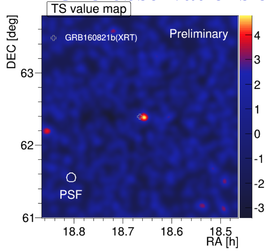 The MAGIC collaboration showed a hint for the long-awaited detection of a gamma-ray burst (GRB) with their Imaging Air Cherenkov Telescope system. The burst itself (GRB 160821B) is one of the brightest short GRBs seen by the GBM instrument onboard the Fermi satellite and MAGIC could react to the incoming alert message within only 24 seconds. Unfortunately the weather conditions at that moment were pretty unfavorable with clouds, high moonlight illuminations and high zenith angles leading to a rather high energy threshold around 500GeV. The observed hotspot has a statistical significance of (only) about 3sigma. The talk discussing the observations is here. Source: Science News The Ligo/Virgo collaboration just published a paper describing the detection of the third gravitational wave!! I won't try to compete with the many very well written blogs around the world describing the event and its astrophysical implications. See for example:
Also note that another crucial piece of information has been published at the same time: the full history of the searches for a coincident (or delayed afterglow-like) signal as reported in a large set of GCN-Notices. A significant number of observatories around the world and across the full electromagnetic spectrum, as well as both major high-energy neutrino telescopes, i.e. incl. ANTARES ;-), reacted to the alert sent out by Virgo/Ligo shortly after the detection of the event in early January 2017. Unfortunately none has detected significant emission... For various reasons we were not able to follow this event with H.E.S.S.. Some details about our preparations for events like this are given here: Multimessenger searches
The Australian Square Kilometre Array Pathfinder (ASKAP) has started operations and immediately detected three Fast Radio Bursts (FRBs). With only ~30 FRBs detected so far and over several years, detecting 3 new ones within a few days promises a wealth of observations in the future. For the moment the bursts have 'only' been detected in the primary beam of the telescopes (see figure below), but once interferometry between several telescopes pointing in the same direction is used, the pointing accuracy will improve to arcsecond levels. The paper describing one of the detected FRBs can be found here. A summary is also given in this nice article. Hopefully ASKAP (and later SKA) will be able to detect the burst during observations and emit online alerts to follow-up instruments. I am already looking forward to extending the H.E.S.S. FRB program from Parkes to SKA/ASKAP alerts. See FRB follow-up with H.E.S.S. for details about my recent work on this. Radio image of the sky where ASKAP found its first FRB. The blue circles are the 36 patches of the sky that ASKAP antenna number 5 was watching at the time the FRB was detected. The red smudge marks where the FRB came from. The black dots are galaxies. The full Moon is shown to scale, in the bottom corner. Ian Heywood (CSIRO), from The Conversation
Astronomical instruments are expensive. Satellites are even more expensive. Optimizing the data taking and making the most out of the available observations is therefore an important process. The XMM-Newton X-ray satellite has illustrated this by publishing its second "Second Slew Survey Catalog". Typically ground and space borne observatories perform pointed observations of a pre-defined list of interesting regions and objects. The time spent moving the instrument from one direction to the next is usually called dead-time and disregarded. The ESA led XMM-Newton satellite continues data taking during the slewing and the team managed to carefully analyse the obtained data and extract very useful information. The resulting source catalog contains ~70.000 sources detected during the slewing and represents ~10% of all XMM detected sources. The analysis add data to some old friends of mine: star-and-black hole binary systems like GRS 1915+105 and V 4641 Sgr (see Microquasars for a recent H.E.S.S./RXTE analysis of these objects). Sidenote: The operation mode of current TeV gamma-ray Cherenkov telescopes does not allow for data taking during slewing (the cameras are switched off in order to prevent damage due to bright stars passing through the field-of-view). On the other hand, the upcoming Cherenkov Telescope Array (CTA) will be able to continuously take data and one can imaging a future "CTA Slew Survey Catalog"...
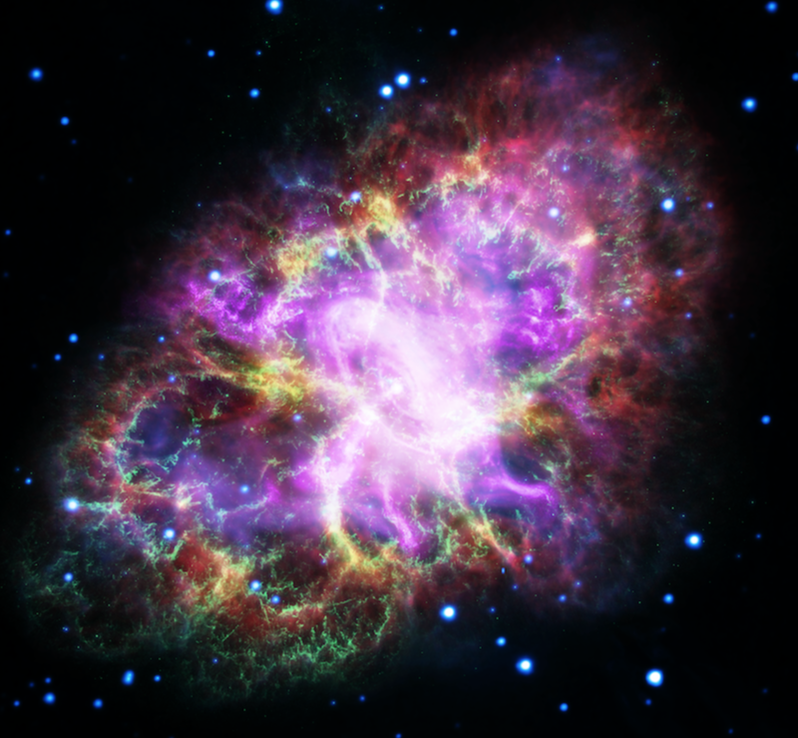 Combining data from various observatories covering (almost) the full electromagnetic spectrum, a new, very detailed and beautiful image of the Crab Nebula has been produced. See the NASA website for details. The individual ingredients are highlighted in the video below: This video starts with a composite image of the Crab Nebula, a supernova remnant that was assembled by combining data from five telescopes spanning nearly the entire breadth of the electromagnetic spectrum: the Very Large Array, the Spitzer Space Telescope, the Hubble Space Telescope, the XMM-Newton Observatory, and the Chandra X-ray Observatory. The video dissolves to the red-colored radio-light view that shows how a neutron star’s fierce “wind” of charged particles from the central neutron star energized the nebula, causing it to emit the radio waves. The yellow-colored infrared image includes the glow of dust particles absorbing ultraviolet and visible light. The green-colored Hubble visible-light image offers a very sharp view of hot filamentary structures that permeate this nebula. The blue-colored ultraviolet image and the purple-colored X-ray image shows the effect of an energetic cloud of electrons driven by a rapidly rotating neutron star at the center of the nebula. Credits: NASA, ESA, J. DePasquale (STScI) The Crab Nebula was the first astrophysical object observed in TeV gamma-rays. This breakthrough measurement was performed with the Whipple Observatory (using a 10-meter mirror and a 37-pixel camera) and was announced in July 1989 ("Observation of TeV gamma rays from the Crab nebula using the atmospheric Cerenkov imaging technique" – APJ 342 (1989) 379-395). Until today the Crab nebula is used as 'standard candle' and calibration source in high-energy gamma-ray astronomy. A recent example can be found in this paper from the HAWC Collaboration: Observation of the Crab Nebula with the HAWC Gamma-Ray Observatory.
|
AuthorMyself ;-) Archives
January 2024
Categories
All
|
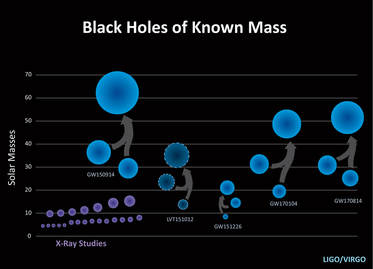
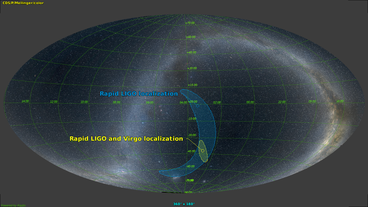
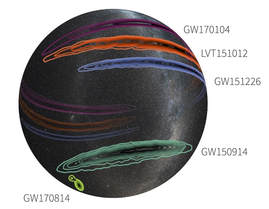
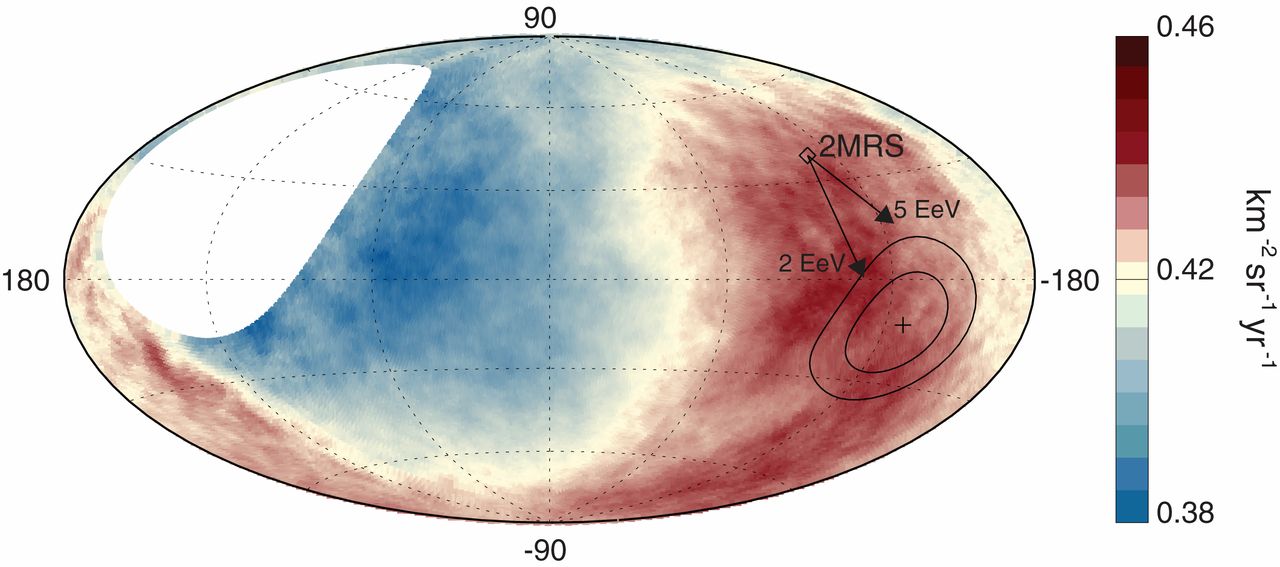

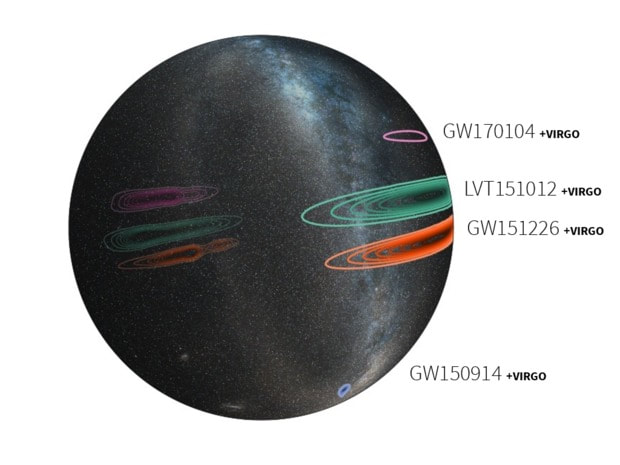
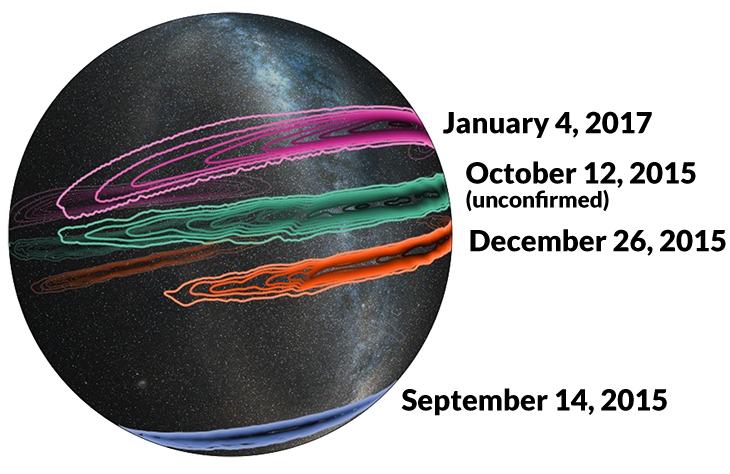



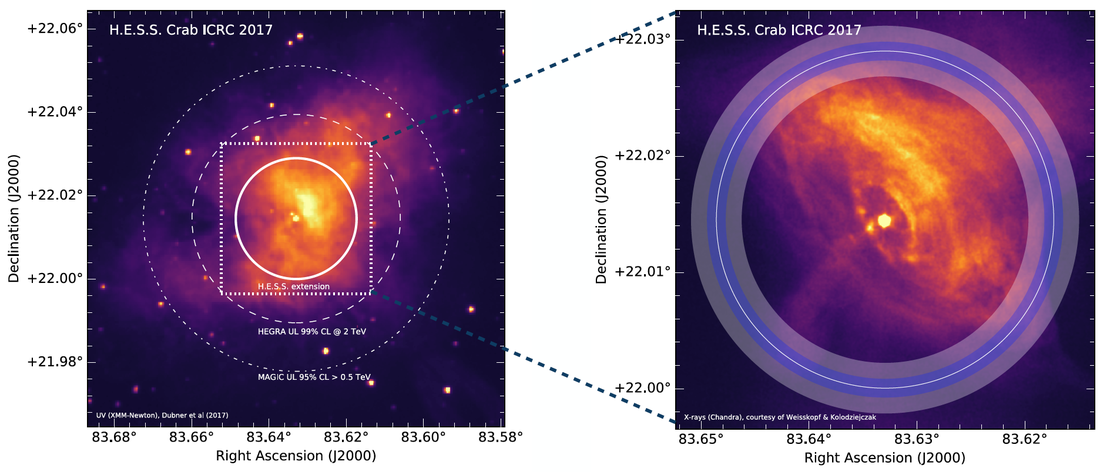
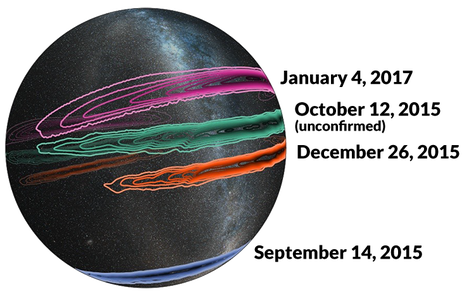
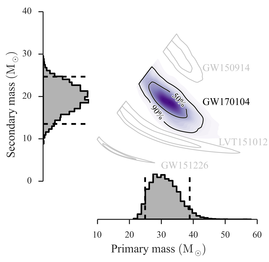
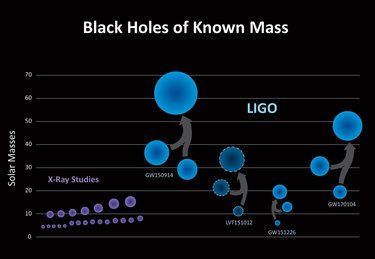
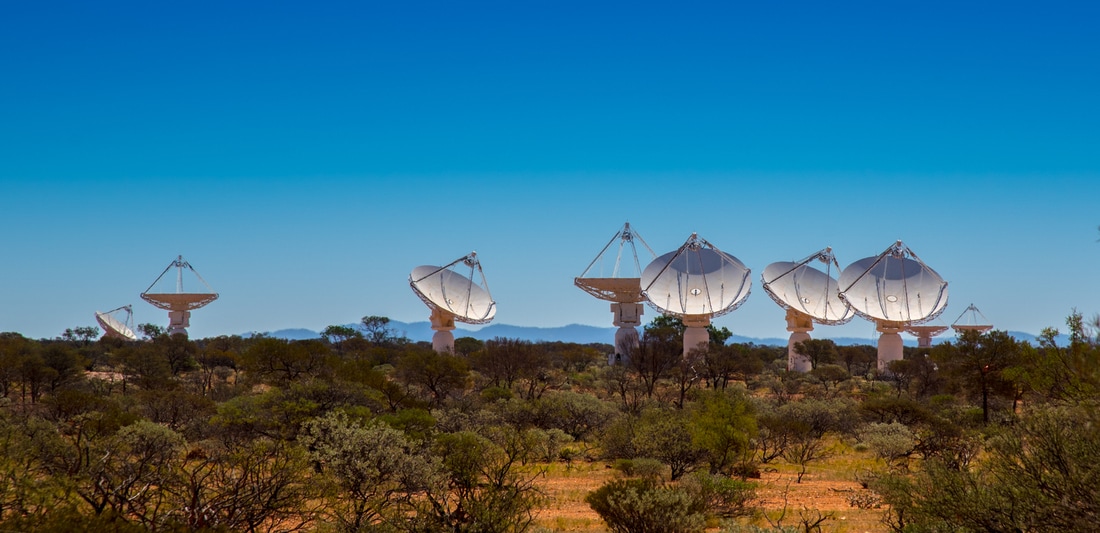
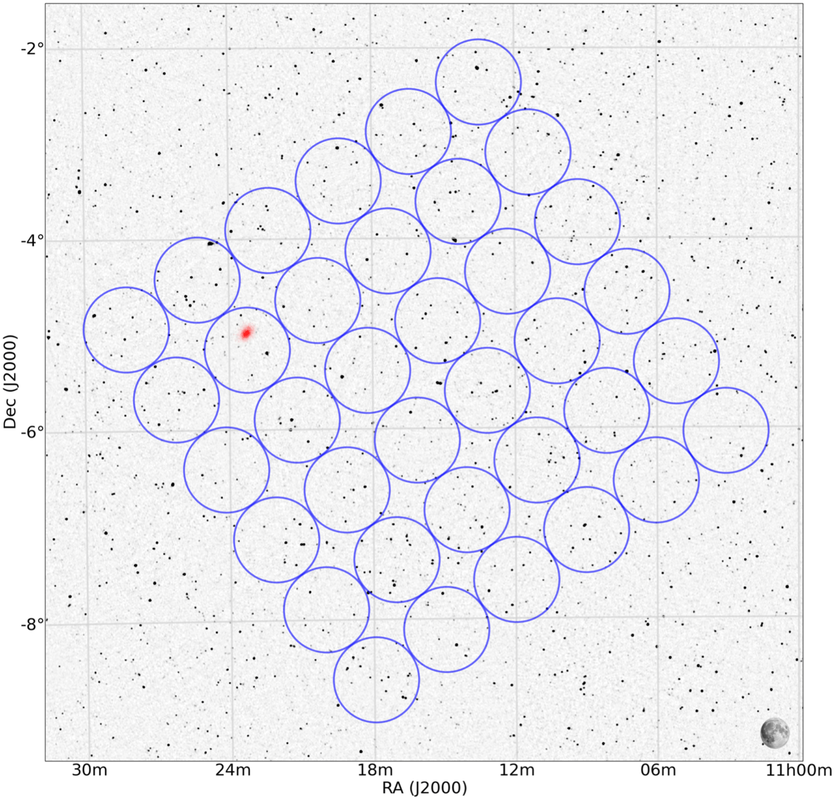
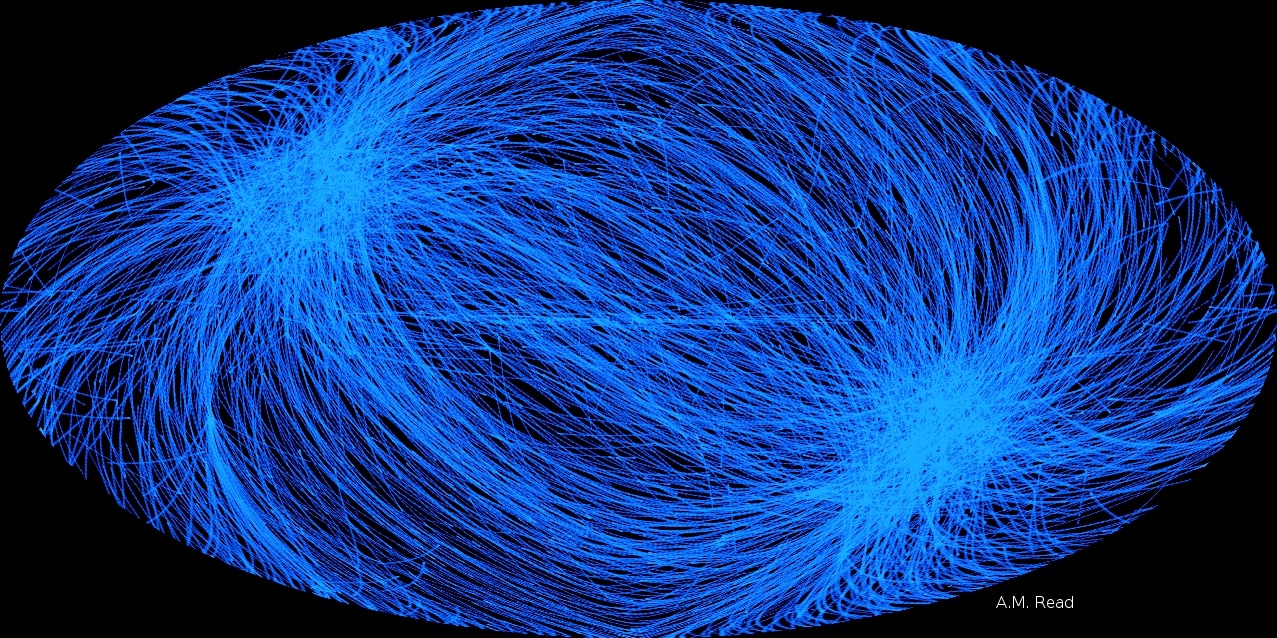
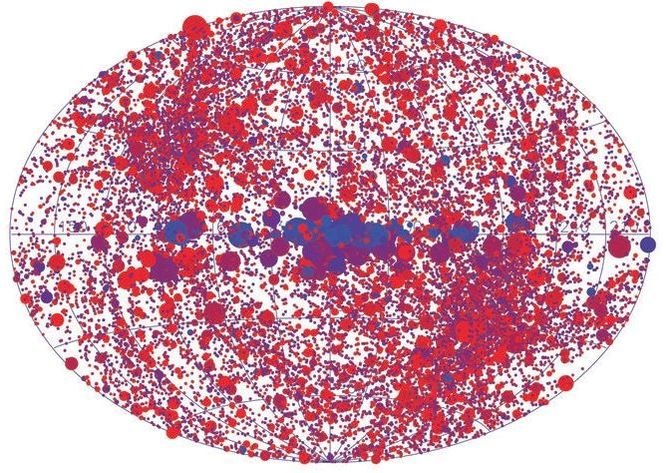
 RSS Feed
RSS Feed